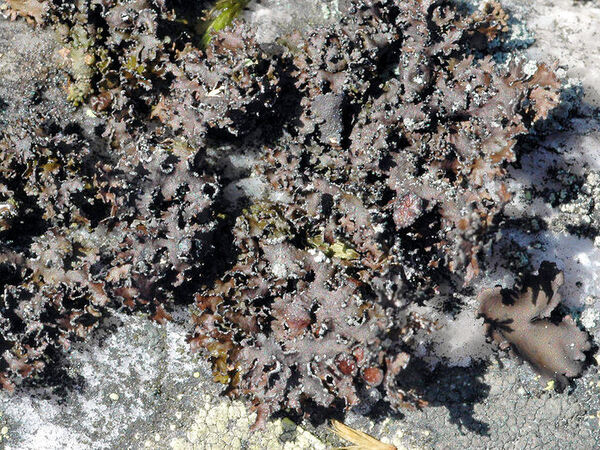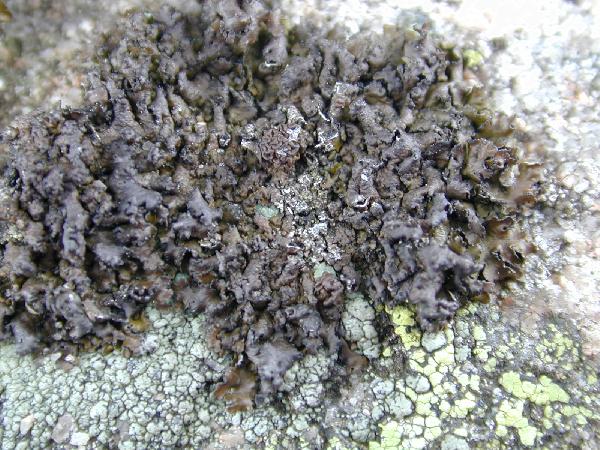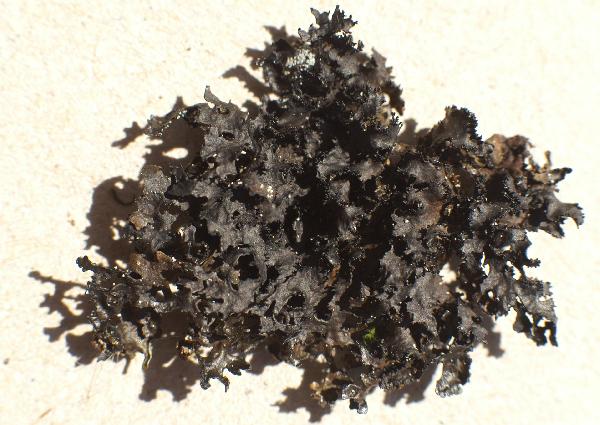Cetraria commixta (Nyl.) Th. Fr.
Lich. Scand., 1: 109, 1871. Basionym: Platysma commixtum Nyl. - Syn. Meth. Lich., 1, 2: 310, 1860.
Synonyms: Cetraria commixta (Nyl.) Th. Fr.; Cetraria fahlunensis auct. p.p.; Cetrariella commixta (Nyl.) A. Thell & Kärnefelt; Imbricaria fahlunensis (L.) DC. et auct. p.p.; Melanelia commixta (Nyl.) A. Thell; Parmelia fahlunensis (L.) Ach. et auct. p.p.; Platysma fahlunense (L.) Nyl. et auct. p.p.
Distribution: N - TAA (Nascimbene & al. 2022(, Lomb, Piem, VA (Piervittori & Isocrono 1999, Matteucci & Vanacore Falco 2015).
Description: Thallus foliose, heteromerous, dorsiventral, adnate, forming 1-7(-15) cm wide rosettes. Lobes elongate, 1-3(-4) mm wide, often slightly channelled. Upper surface brown to black-brown, usually glossy, with small, often poorly evident, usually laminal, white pseudocyphellae and knobby pycnidial warts along the margins; lower surface pale or turning brown in central parts, with scattered, pale to dark brown rhizines. Upper cortex paraplectenchymatous, with a non-pored epicortex, the cell walls containing Cetraria-type lichenan; medulla white. Apothecia lecanorine, submarginal, located at the tips of short lobes, to 1-5(-7) mm across, with a smooth, concave, brown disc and a thin, inflexed usually smooth, often crenulate thalline margin. Epithecium brownish; hymenium and hypothecium colourless. Asci 8-spored, narrowly clavate, with a small axial body and a distinct, K/I+ blue ring-structure in the rather large tholus, approaching the Lecanora-type. Ascospores 1-celled, hyaline, ellipsoid, 7-10 x 4-6.5 μm. Pycnidia common, black, immersed in slightly raised, knobby, mostly marginal warts. Conidia short-bacilliform or fusiform, 3-6 x 1-1.5 μm. Photobiont chlorococcoid. Spot tests: upper cortex K-, C-, KC-, P-; medulla K-, C-, KC- or rarely KC+ red, P-. Chemistry: medulla with α-collatolic acid or alectoronic acid.
Note: a circumpolar, arctic-alpine lichen found on hard siliceous rocks wetted by rain in upland areas; somehow more bound to cold-humid sites than the superficially similar Melanelia hepatizon.
Growth form: Foliose, broad lobed
Substrata: rocks
Photobiont: green algae other than Trentepohlia
Reproductive strategy: mainly sexual
Commonnes-rarity: (info)
Alpine belt: rather rare
Subalpine belt: rather common
Oromediterranean belt: absent
Montane belt: very rare
Submediterranean belt: absent
Padanian area: absent
Humid submediterranean belt: absent
Humid mediterranean belt: absent
Dry mediterranean belt: absent

Predictive model
Herbarium samples
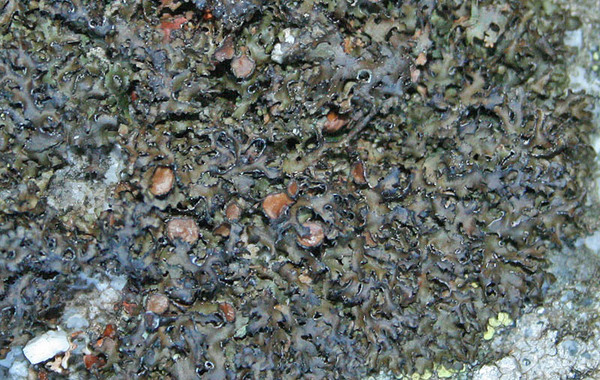
Antonio Valero; Owner: Antonio Valero
Spain; altitude: 1900 m.
Herbarium: Forum Natura Mediterraneo
2011

Antonio Valero; Owner: Antonio Valero
Spain; altitude: 1900 m.
Herbarium: Forum Natura Mediterraneo
2011
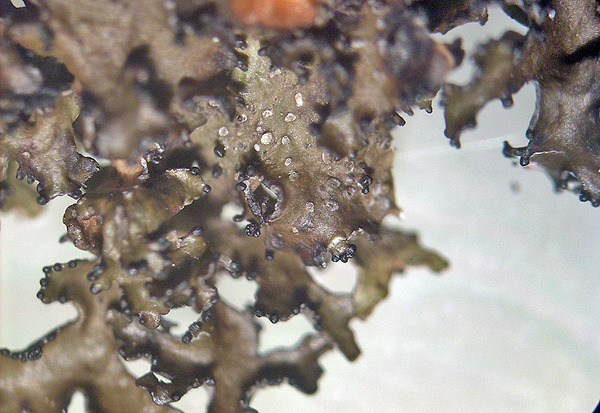
Antonio Valero; Owner: Antonio Valero
Spain; altitude: 1900 m.
Herbarium: Forum Natura Mediterraneo
2011

Antonio Valero; Owner: Antonio Valero
Spain; altitude: 1900 m.
Herbarium: Forum Natura Mediterraneo
2011
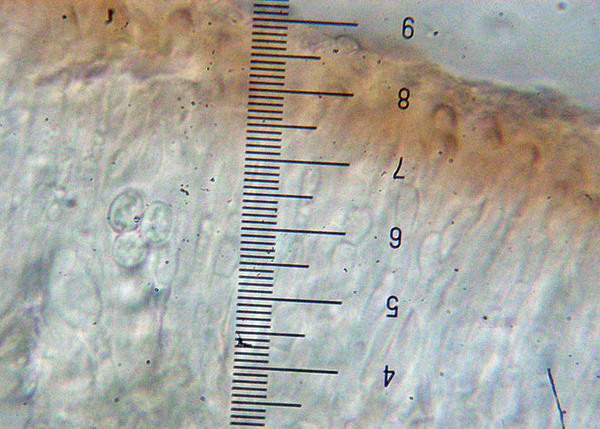
Antonio Valero; Owner: Antonio Valero
Spain; altitude: 1900 m.
Herbarium: Forum Natura Mediterraneo
2011
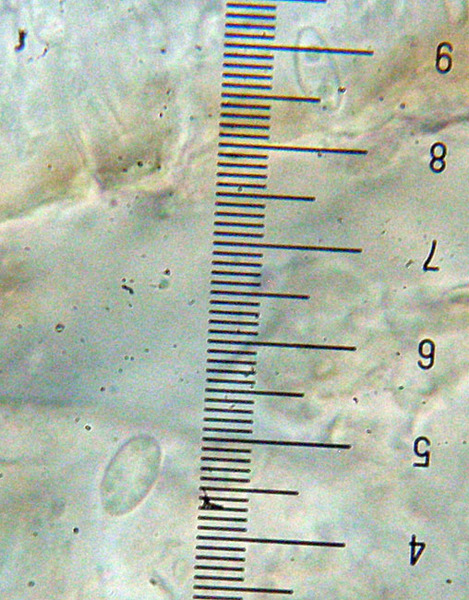
Antonio Valero; Owner: Antonio Valero
Spain; altitude: 1900 m.
Herbarium: Forum Natura Mediterraneo
2011

Antonio Valero; Owner: Antonio Valero
Spain; altitude: 1900 m.
Herbarium: Forum Natura Mediterraneo
2011

Antonio Valero; Owner: Antonio Valero
Spain; altitude: 1900 m.
Herbarium: Forum Natura Mediterraneo
2011

Antonio Valero; Owner: Antonio Valero
Spain; altitude: 1900 m.
Herbarium: Forum Natura Mediterraneo
2011
Growth form: Foliose, broad lobed
Substrata: rocks
Photobiont: green algae other than Trentepohlia
Reproductive strategy: mainly sexual
Commonnes-rarity: (info)
Alpine belt: rather rare
Subalpine belt: rather common
Oromediterranean belt: absent
Montane belt: very rare
Submediterranean belt: absent
Padanian area: absent
Humid submediterranean belt: absent
Humid mediterranean belt: absent
Dry mediterranean belt: absent

Predictive model
| Herbarium samples |

Antonio Valero; Owner: Antonio Valero
Spain; altitude: 1900 m.
Herbarium: Forum Natura Mediterraneo
2011

Antonio Valero; Owner: Antonio Valero
Spain; altitude: 1900 m.
Herbarium: Forum Natura Mediterraneo
2011

Antonio Valero; Owner: Antonio Valero
Spain; altitude: 1900 m.
Herbarium: Forum Natura Mediterraneo
2011

Antonio Valero; Owner: Antonio Valero
Spain; altitude: 1900 m.
Herbarium: Forum Natura Mediterraneo
2011

Antonio Valero; Owner: Antonio Valero
Spain; altitude: 1900 m.
Herbarium: Forum Natura Mediterraneo
2011

Antonio Valero; Owner: Antonio Valero
Spain; altitude: 1900 m.
Herbarium: Forum Natura Mediterraneo
2011

Antonio Valero; Owner: Antonio Valero
Spain; altitude: 1900 m.
Herbarium: Forum Natura Mediterraneo
2011

Antonio Valero; Owner: Antonio Valero
Spain; altitude: 1900 m.
Herbarium: Forum Natura Mediterraneo
2011

 INDEX FUNGORUM
INDEX FUNGORUM
 GBIF
GBIF
 DOLICHENS
DOLICHENS
